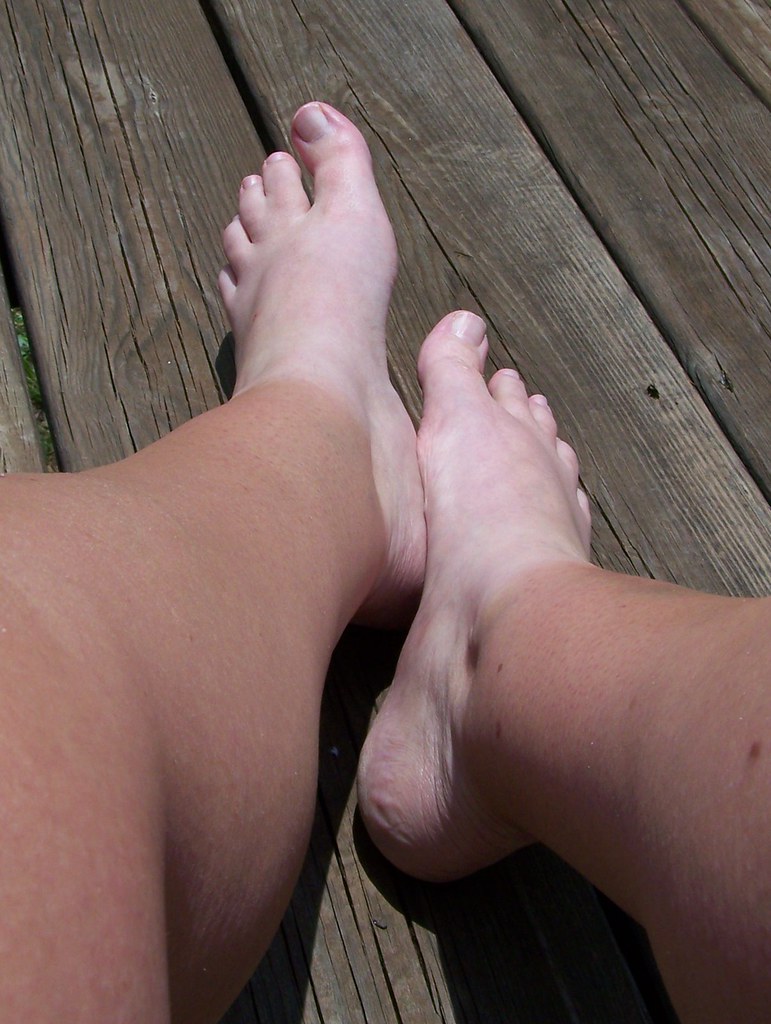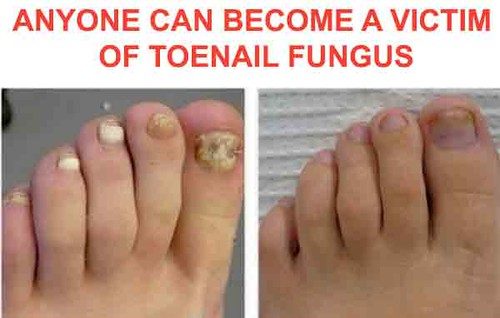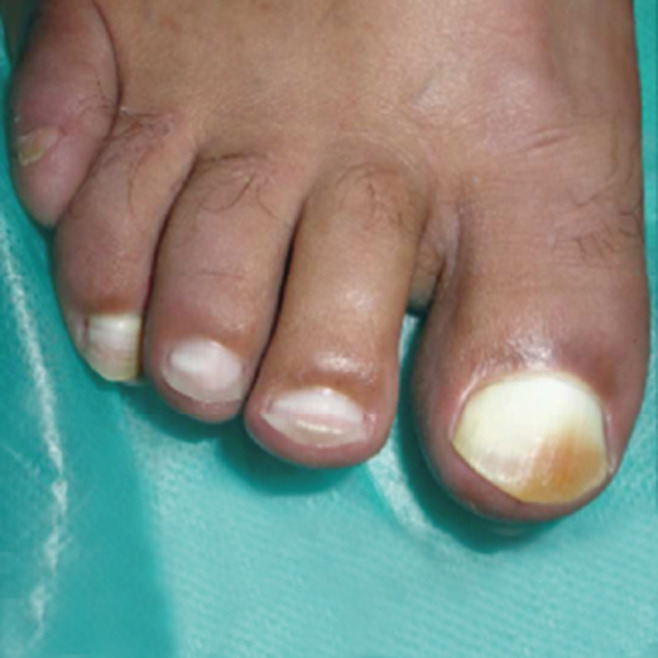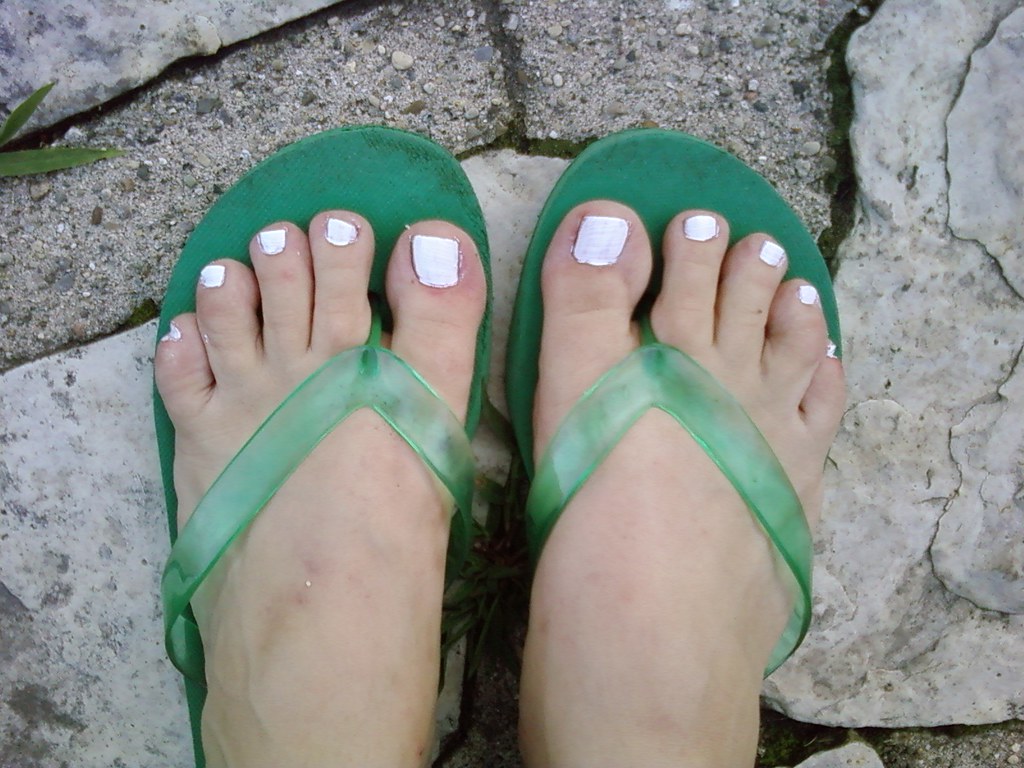Contents
- What do white toenails mean?
- Fungal infection, a common cause of white toenails
- Injuries can lead to white toenails.
- Allergic reaction to harmful chemicals
- Liver disease – white toenails as part of the general symptomatology
- White toenails, a sign of a more serious underlying condition
- Arsenic exposure, a less common cause of white toenails
- Vitamin or mineral deficiency, causing white toenails primarily in women
- Things to remember about the health of the toenails
- What do researchers have to say on the subject?
- FAQ: Understanding White Toenails
- Do white toenails mean anything?
- Why are white toenails a red flag?
- Why do guys like white toenails?
- Why have my toenails turned white?
- What deficiency causes white toenails?
- How do you get rid of white chalky toenails?
- What do liver failure nails look like?
- What do diabetic toenails look like?
- Is white toenail a fungus?
- FAQ: Understanding White Toenails
- Final word
What do white toenails mean?
The human body is a cleverly designed machine, with each part serving a specific purpose. The nails, both on the fingers and toes, are meant to protect the soft nail bed, reducing the risk of injury. A healthy nail is nude, with only the tip being white. Several medical conditions can cause the toenails to become white altogether, requiring treatment to regain their natural, healthy aspect.

In such situations, it is important to understand that other changes can accompany the white toenails, such as nail thickening, discoloration, or the formation of streaks.
Fungal infection, a common cause of white toenails
When a person suffers from a fungal infection, the affected toenails may turn completely white. Depending on the severity of the infection, they may also thicken or become brittle.
The treatment for a fungal infection is chosen by how much the respective microorganisms have invaded the nail (and the nailbed). Topical antifungal solutions, such as medicated nail polish or cream, are recommended for mild infections, while oral medication is reserved for moderate to severe infections. In cases where the infection is severe, the doctor might recommend laser treatments or the removal of the affected toenail (partial or complete).

The good news is that fungal infections can be easily prevented by following some common-sense measures. For example, you should wear only socks made from cotton and change them daily. Regarding footwear, you should avoid wearing tight shoes and throw away any old or worn-out shoes (as these can cause the fungal infection to reoccur).
The antifungal powder can also be used for preventative purposes so that you can use it daily. Last but not least, keep your nails trimmed and avoid sharing personal hygiene objects with other people (the fungal infection can be easily transmitted from one person to another).
Injuries can lead to white toenails.
As it was already mentioned at the beginning of the article, our nails serve the purpose of protection against more or less severe injuries. When our toes are injured, the toenails may also suffer, changing their color to white. Even a chipped nail will present a white mark as a sign of the recent injury. Moreover, if the injury occurs during the growth of the nail, the injury site will be marked white on the respective nail. The more the toenail will grow, the more obvious the thing will be.
How can you determine if the main culprit is a fungal infection or an injury?
First, trace back your steps and try to remember if and when an injury occurred. Second, take a good look at the affected toenail(s). If an injury has caused the problem, it is highly unlikely the whole nail will turn white. Instead, you probably have only a small spot or a white mark on the respective toenail(s). A fungal infection, on the other hand, can cause the entire toenail to turn white.
In case of injury, there are no treatment measures that you can take. You must wait until the nail grows and the white part/mark disappears. You should, however, be more attentive and avoid similar injuries in the future. By preventing further damage, you will also give the nail time to grow and be healthy again. Remembering and understanding that injuries can make toenails prone to fungal infections is important. Always keep your toenails clean and avoid excess moisture, as such conditions can stimulate fungal overgrowth.
Note: in most situations, the injury to the toenail is caused by an object being dropped on the foot (direct trauma). If bleeding occurs under the nail, blood vessels have also been injured, causing the nail to turn black as the blood is absorbed. On the other hand, if the trauma is not severe enough to cause bleeding, only white spots will appear on the respective toenails. These are going to disappear as the healthy nail continues to grow. In case of recurring trauma, as with runners wearing inadequate footwear (too small/tight), white lines can appear on the toenails. This is because the toes keep hitting the end of the shoes, being injured regularly.
Allergic reaction to harmful chemicals
No matter how beautiful nail polish might look on your nails, it is essential to understand that many polishes contain harmful chemicals. These can trigger a serious allergic reaction, causing the nails to become excessively dry and white. The main culprit for such problems is formaldehyde, often found as an ingredient in nail polishes. Remember that the nail polish remover can lead to similar problems, especially if it contains acetone.
The solution to the problem is to avoid using any nail polish or remover that may contain harmful ingredients. Instead, seek out a nail polish containing vitamins that nourish and keep the toenails healthy. There are also nail polishes and removers that contain natural antifungal elements, helping you keep the risk of fungal infections to a minimum.
Liver disease – white toenails as part of the general symptomatology
Patients who suffer from chronic liver disease or advanced liver failure present several symptoms, with white toenails, “Terry’s Nails“, being part of the clinical picture. However, such changes do not occur until the late stage of the disease and are not common. Patients diagnosed with liver disease or organ failure present other symptoms, such as nausea, vomiting, jaundice, and abdominal pain. Unfortunately, there is no treatment per se for the white toenails; all the symptoms generally improve with successful liver transplants.

White toenails, a sign of a more serious underlying condition
Toenails may turn white, with the tip being either reddened or dark in color. In the medical field, these are Terry’s nails, representing a sign of a more serious underlying condition, such as diabetes, cirrhosis, or malnutrition. The presence of Terry’s nails can also indicate organ failure, meaning heart, kidneys, or liver. It can suggest that the patient suffers from iron deficiency anemia, protein deficiency, arthritis, or hyperthyroidism. Patients who undergo chemotherapy against different forms of cancer can present such changes as well. In general, the aspect of the toenails improves as the underlying condition is successfully treated or the chemotherapy stops.
Arsenic exposure, a less common cause of white toenails
Several changes can occur when people are exposed to arsenic, with white toenails at the top. This is a serious toxic reaction requiring immediate removal from the primary source. Once the source of toxicity is removed, the nail will grow back, maintaining its healthy aspect and color.
Vitamin or mineral deficiency, causing white toenails primarily in women
Several symptoms may occur if a person suffers from a vitamin or mineral deficiency. Such changes are more common in women; for example, if one exhibits white marks on the toenails, she might suffer from calcium deficiency (bone health is also affected). The same goes for zinc deficiency; apart from the white spots on the toenails, the hair can fall off, and the immune system’s strength can be reduced. Correcting the diet or adding nutritional supplements is the easiest way to solve the vitamin/mineral deficiency.
Things to remember about the health of the toenails
If you want to maintain your toenails healthily and prevent them from turning white, it is important to keep them trimmed and filed (always use a clean, quality file). Cutting or pushing back your cuticles too aggressively is not recommended, as you will injure the nail bed and cause white spots to appear on your toenails. To reduce the risk of discoloration, it is indicated to moisturize your toenails on a daily basis and keep them clean.

If you suspect a vitamin/mineral deficiency causes the white toenails, do not be in a hurry to take nutritional supplements. Go to the doctor and get a complete blood count to see the exact vitamins/minerals that are deficient. Only then can you adjust your diet or take nutritional supplements, restoring the health of the toenails, among other things.
Natural remedies can be used to improve the aspect of white toenails. Vinegar, diluted in water, can restore the healthy-looking aspect of the nails. In general, it is recommended to soak the affected toenails in water for about half an hour. The application should be repeated daily until satisfactory results are obtained. Tea tree oil can do wonders for the health of the toenails; however, it is recommended to be applied to the white toenails only after they have been scraped or soaked in water. Camphol or menthol ointments have antifungal properties, and they can be used on white toenails that present a fungal infection (excellent penetration of the nail surface).
What do researchers have to say on the subject?
According to a case study[1] presented by specialists online, treating toenail fungus by alternating vinegar and hydrogen peroxide is possible. The person presented in the case study had a severe fungal toenail infection at the level of the big toe. The infection occurred after a household accident, which led to an injury. The affected toenail turned white, among other changes.
The treatment consisted of alternating vinegar and hydrogen peroxide soaks. What was interesting about this case study was that the press & release technique was used to increase the absorption of the natural remedies at the level of the affected toenail. The technique requires that one press on the toenails and then release it. The procedure has to be repeated several times during the actual soak. The authors draw attention to the fact that the two remedies have to be alternated and not used simultaneously (this leads to the formation of peracetic acid, which can irritate the skin and the toenails significantly).
A study[2] regarding onychomycosis, presented in the Journal of Fungi, discusses the different types of fungal infections and the characteristic changes the toenails undergo. For example, in a patient suffering from distal and lateral subungual onychomycosis, the toenail plate will turn yellow-white and become thickened at the same time.
The fungi will be on the dorsal nail plate if the patient suffers from white superficial onychomycosis. The fungal colonies can be identified where the toenail has turned white and opaque. In many situations, these friable patches can be scraped away without effort. In the case of proximal subungual onychomycosis, the ventral part of the nail plate is affected; the toenail will turn white in the area close to the lunula, accompanied by acute periungual inflammation. Last but not least, in the case of endonym onychomycosis, one of the rarest forms of toenail fungal infection, the entire nail plate is affected, becoming white and split.
FAQ: Understanding White Toenails
Do white toenails mean anything?
White toenails can indicate several things, ranging from minor cosmetic issues to serious health conditions. White spots or streaks on toenails are often harmless and caused by minor injuries or nail trauma. However, persistent white coloration could signify fungal infections, nutritional deficiencies, or underlying health problems.
Why are white toenails a red flag?
White toenails can be a red flag for underlying health issues such as fungal infections, liver disease, or kidney problems. In medical terms, completely white nails or those with a significant amount of whitening could indicate conditions like leukonychia or Terry’s nails, which often require medical evaluation.
Why do guys like white toenails?
Some men prefer white toenails for aesthetic and cultural reasons. White is a bright, clean color that contrasts well with different skin tones and is often associated with grooming and attention to detail. Additionally, it is a popular color in fashion and beauty trends.
Why have my toenails turned white?
Several factors, including fungal infections, nail polish damage, or health conditions like liver or kidney disease, can cause white toenails. Sometimes, it’s due to an allergic reaction to nail polish or hardeners.
What deficiency causes white toenails?
Nutritional deficiencies, particularly zinc and calcium, can lead to white spots on toenails. However, a significant change in nail color might also be linked to a lack of protein or other essential nutrients.
How do you get rid of white chalky toenails?
White chalky toenails, often a sign of fungal infection, can be treated with antifungal medications. Over-the-counter antifungal creams or ointments, and sometimes oral medications, are used. It’s important to keep the nails dry and clean and consult a healthcare provider for persistent symptoms.
What do liver failure nails look like?
In cases of liver failure, nails might turn completely white except for a narrow band at the tip, known in medical terms as Terry’s nails. This condition is often seen in patients with severe liver diseases and is caused by decreased blood flow and an increase in connective tissue in the nail bed.
What do diabetic toenails look like?
Diabetic toenails can appear thicker and more brittle due to poor circulation and the increased risk of fungal infection. They may also be yellowish or have a white discoloration due to nail fungus, which is more commonly seen in diabetic patients.
Is white toenail a fungus?
White toenail discoloration can indeed be a sign of a fungal infection known as onychomycosis. This condition leads to thick, chalky, white, or yellow nail discoloration. Treating fungal infections early is important to prevent them from spreading or worsening.
Final word
As you have seen, a number of conditions can cause toenails to become white. It is important to first diagnose the underlying condition and then seek suitable treatment. A medical professional must recommend and supervise natural remedies and medical treatments.
References:
[1] The efficacy of vinegar and hydrogen peroxide in treating toenail fungus: a case study. 2008. Retrieved from: http://www.michaelandjudystouffer.com/judy/articles/toenailfungus.htm
[2] Onychomycosis: a review. Journal of Fungi, 2015, 1, 30-43. Retrieved from: http://www.mdpi.com/journal/jof
